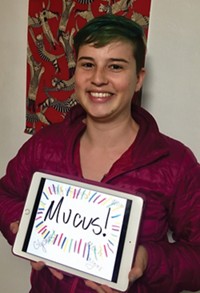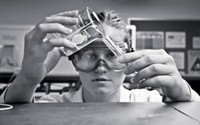Advertisement
Grab your lab coat. Let's get started
Welcome!
Welcome!
Create an account below to get 6 C&EN articles per month, receive newsletters and more - all free.
It seems this is your first time logging in online. Please enter the following information to continue.
As an ACS member you automatically get access to this site. All we need is few more details to create your reading experience.
Not you? Sign in with a different account.
Not you? Sign in with a different account.
ERROR 1
ERROR 1
ERROR 2
ERROR 2
ERROR 2
ERROR 2
ERROR 2
Password and Confirm password must match.
If you have an ACS member number, please enter it here so we can link this account to your membership. (optional)
ERROR 2
ACS values your privacy. By submitting your information, you are gaining access to C&EN and subscribing to our weekly newsletter. We use the information you provide to make your reading experience better, and we will never sell your data to third party members.
Profiles
Career Ladder
Career Ladder: Curtis Ho
Organometallics lecturer uses his calling as a Buddhist monk to help calm the stresses of academic life
by Melissa Gilden
April 11, 2019
| A version of this story appeared in
Volume 97, Issue 15
1989
Growing up on 3 continents

Curtis Ho always wanted to be a scientist, but his path didn’t exactly go the way of his boyhood dreams. The son of an IBM employee father from Shanghai and a homemaker from Hong Kong, Ho lived in the greater Toronto area until he was 8 years old. “I wanted to be an astrophysicist for NASA,” he says. Ho and his family then moved to Hong Kong for several years where Ho, keeping with his family’s Chinese Buddhist tradition, began his training to become a Buddhist monk. The pollution and hypercompetitive academic environment of Hong Kong led them to settle in Tasmania, Australia, where both his aunt and Buddhist master lived. Ho says that in high school students looked at him differently because of his shaved head and Buddhist garb. While Tasmania is a conservative place, he says, “it is becoming more and more open and accepting as they realize that cultural exchange is valuable to the community.”
2006
Switching to chemistry

Ho attended the University of Tasmania (UTAS), initially wanting to study microbiology. But Ho quickly found another academic passion, and he switched his major to chemistry. “I enjoyed how everything works on a fundamental level,” he says. “I love the details that chemistry gives, the mechanistic details of reactions, and how they apply to life.” Ho went on to pursue his PhD in organometallic chemistry at UTAS.
2015
A love for teaching

Ho was offered a 3-year teaching position immediately after earning his degree and fell in love with teaching and academia. “I love teaching and passing on what I understand and know to the next generation,” especially inspiring new chemists, he says. Ho says that his students are intrigued by but also sensitive about the shaved head and Buddhist clothing that his peers found strange in high school. His advice to chemistry students? “Find a really good mentor,” he says. “A really good mentor is one that, if you do the work for them, they’ll do just as much—or even more—for you to help get you where you want to go.”
Today
Buddhism and science

In addition to teaching chemistry at UTAS, Ho teaches weekly classes on Buddhist philosophy, meditation, and martial arts at the Tasmanian Chinese Buddhist Academy of Australia. As a Buddhist monk, he also trains in Buddhist martial arts, is a regular performer of the traditional lion dance to share Chinese culture, and does volunteer work to give back to his community. Buddhism is about not letting yourself be controlled by external factors, such as stress, he says. That has helped guide the way he has faced adversity, rejection, and other negative things in his life. “I feel that my Buddhist training has allowed me to deal” with the stresses of academia and earning a PhD, Ho says. “It has allowed me to not be so put down by what is given to me.”





Join the conversation
Contact the reporter
Submit a Letter to the Editor for publication
Engage with us on Twitter